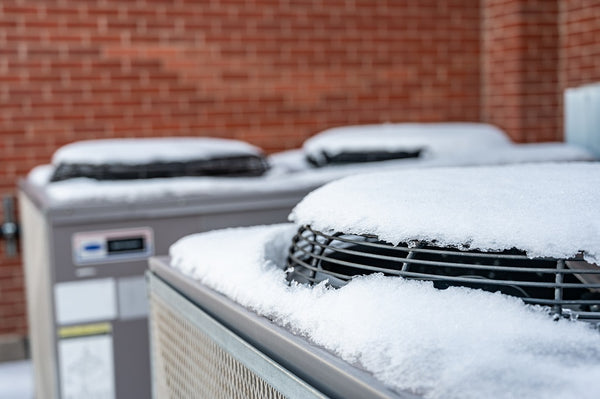
Winter can be very challenging for commercial property even if you take preventive measures during warmer seasons. Besides, you never know just how cold the winter season might be with today’s climate. You need to take winter property management seriously if you don't want to lose money due to heavy snow, blizzards, and other surprises of Mother Nature.
How do you prepare for a cold season? Read our winter building maintenance checklist below to find out!
Check The Building’s Heating Systems
The heating system and temperature controllers must be first on any building maintenance checklist. You need to assess the condition of your HVAC during winter maintenance. It’s best to do it well in advance if you want the heating function to work as intended when the winter hits.
Some of the aspects of your inspections should include:
- Performance of your HVAC systems
- Energy consumption metrics
- Thermostats and temperature controllers
- Humidifiers and humidity controllers
- Blowers and hoses
- Drain traps and condensation levels
- Air vents
- Air filters in outside air conditioning units (on rooftops and furnaces)
Pay attention to build-up, cracks, and worn-out equipment. Also, strange sounds, abnormal moisture, and foul odors inside the AC units are usually signs of malfunction. If you want to save on replacements in the future, make sure to buy high-quality HVAC equipment.
Inspect Cooling Systems
The cooling is just as important as heat systems winter property maintenance. After all, properly working cooling prevents ice from building inside your HVAC units.
Start by powering off your chillers and cooling towers for maintenance. Next, drain all units that are not in use and inspect them for debris, and ice and snow buildup. Your specialists should also winterize outside units by wrapping them in plastic.
Calibrate Thermostats

Correctly working thermostat ensures convenient and accurate temperature control — something you’ll need in your building during extremely cold weather. Calibrated temperature controls for central HVAC systems also help reduce energy bills that can get quite high in cold seasons.
You should also attune the thermostat so that the indoor temperature doesn’t differ too much from the weather outside. On top of that, you can reduce CO2 emissions and power consumption by replacing old equipment with premium thermostats.
Clean The Roof
Roof cleaning and repairs should be a vital part of your winter property management plan. Damaged roofs can collect snow and ice, which could melt and slide down in the gutter. If the snow freezes again, it might create ice dams that can loosen shingles, tear off your gutters, or develop cracks. The latter might even cause water to pour into your offices.
So, you should search the roof for areas that might collect water. Additionally, you should hire specialists to check the insulation and possibly add more of it to your roof to prevent heat loss.
Examine Plumbing and Irrigation Systems
If you don’t want to replace your commercial plumbing systems, add preventative piping maintenance to your checklist.
You should examine the piping, faucets, and drain houses on your property. We also recommend insulating the water supply lines to ensure optimal thermal performance and prevent freeze-ups. To do that, simply have someone tape your pipes with tape or rubber-based products.
Look Over All Doors and Windows

Doors and windows can contain barely noticeable gaps that leak hot air and let the cold inside. That's why you should expand your office building maintenance checklist with check-ups of frames, windows, interior, and exterior walls. You don't need to renovate everything — a simple duct tape might do the trick most of the time.
Take Care of Sidewalks and Stairs
Ice-covered stairs and sidewalks near your building can injure your workers and visitors. You need to regularly clean them from snow to ensure it doesn't hurt your business.
Make cleaning your building’s entrances and surrounding areas a part of the winter building maintenance. You might also spill salt, sand, sawdust, or de-icers to prevent slip-ups.
Develop an Emergency Plan
You don’t know what the climate has in store for you, nor can you anticipate the snow density and volume. Having an emergency plan is crucial for winter property maintenance to prevent damage to your building and ensure the safety of your employees.
At the very least, you should prepare the following:
- Detailed course of action in case of blizzards, heavy snowfalls, and other harsh conditions
- Snow removal and deicing equipment
- Emergency car kits and first-aid kits
- Contracts with snow removal companies
What’s Next?
A thought-out checklist and maintenance plan might keep your commercial building from damage during cold seasons. You should conduct regular heating, cooling, and central air conditioner systems maintenance to prepare for any weather.
Do you want to get top-tier quality parts and replacements for your HVAC, temperature control, or piping systems? Feel free to browse through Blackhawk Supply to get the equipment and tools you need at the best price!


